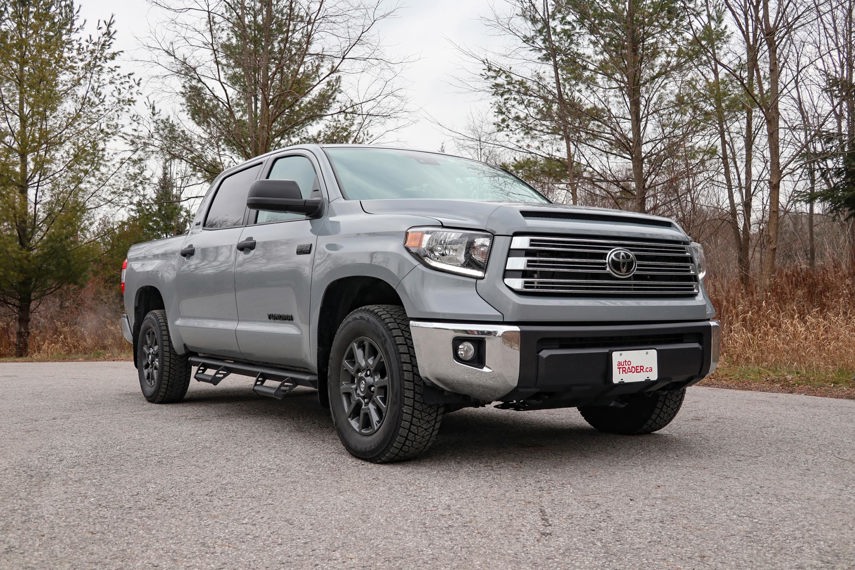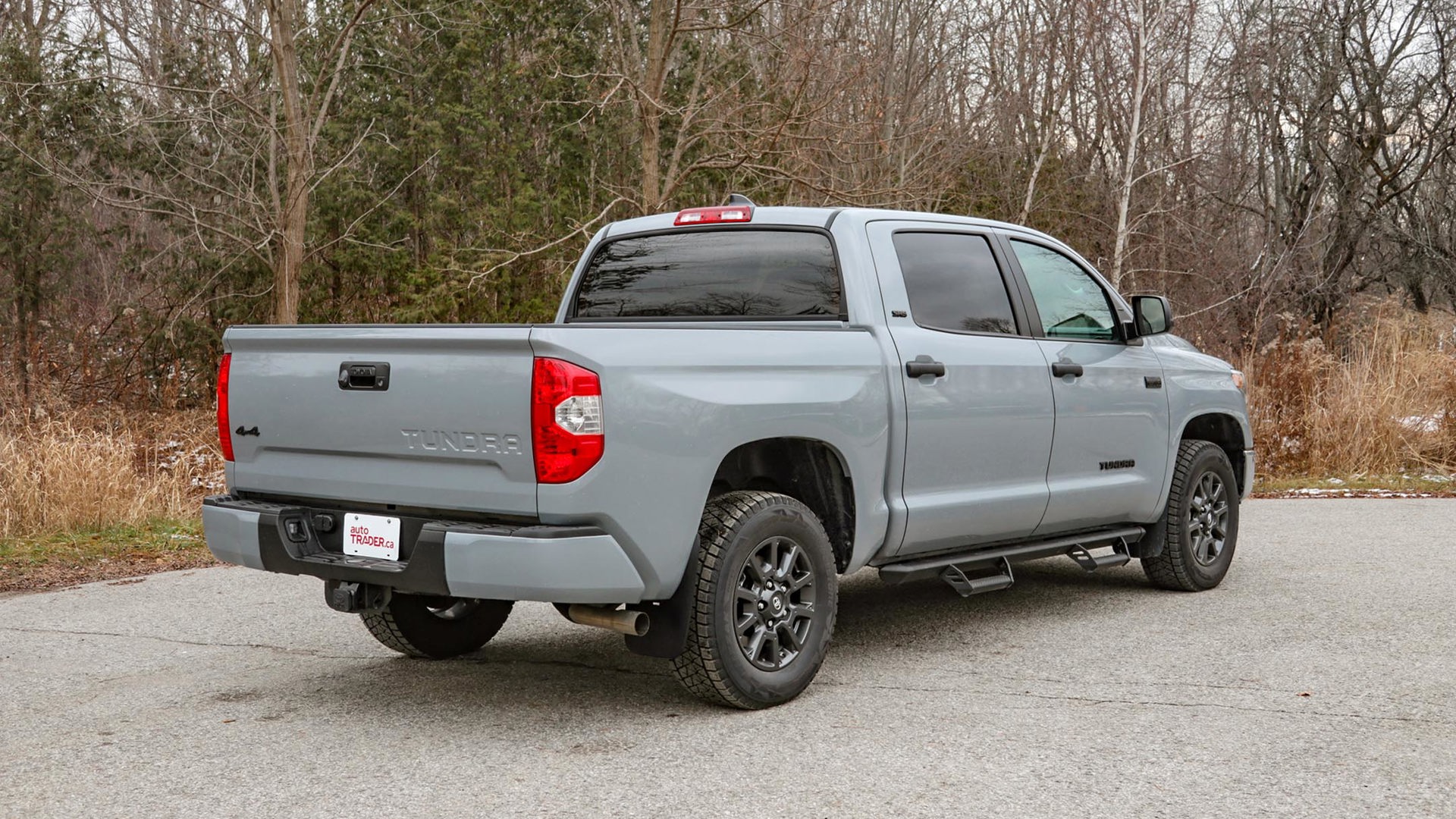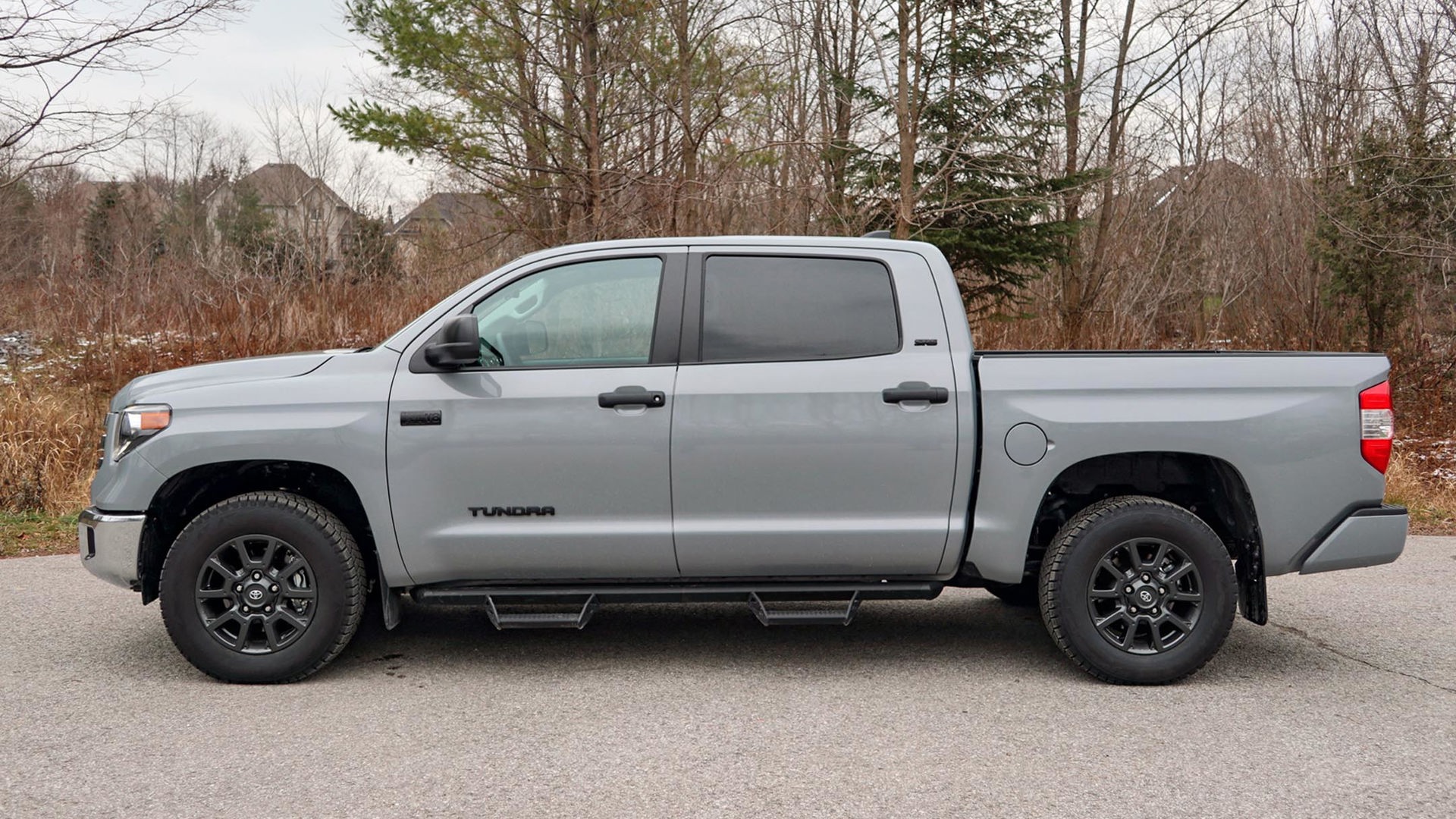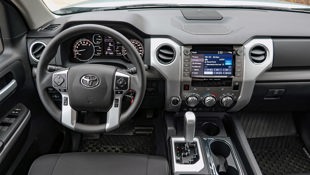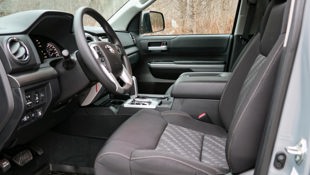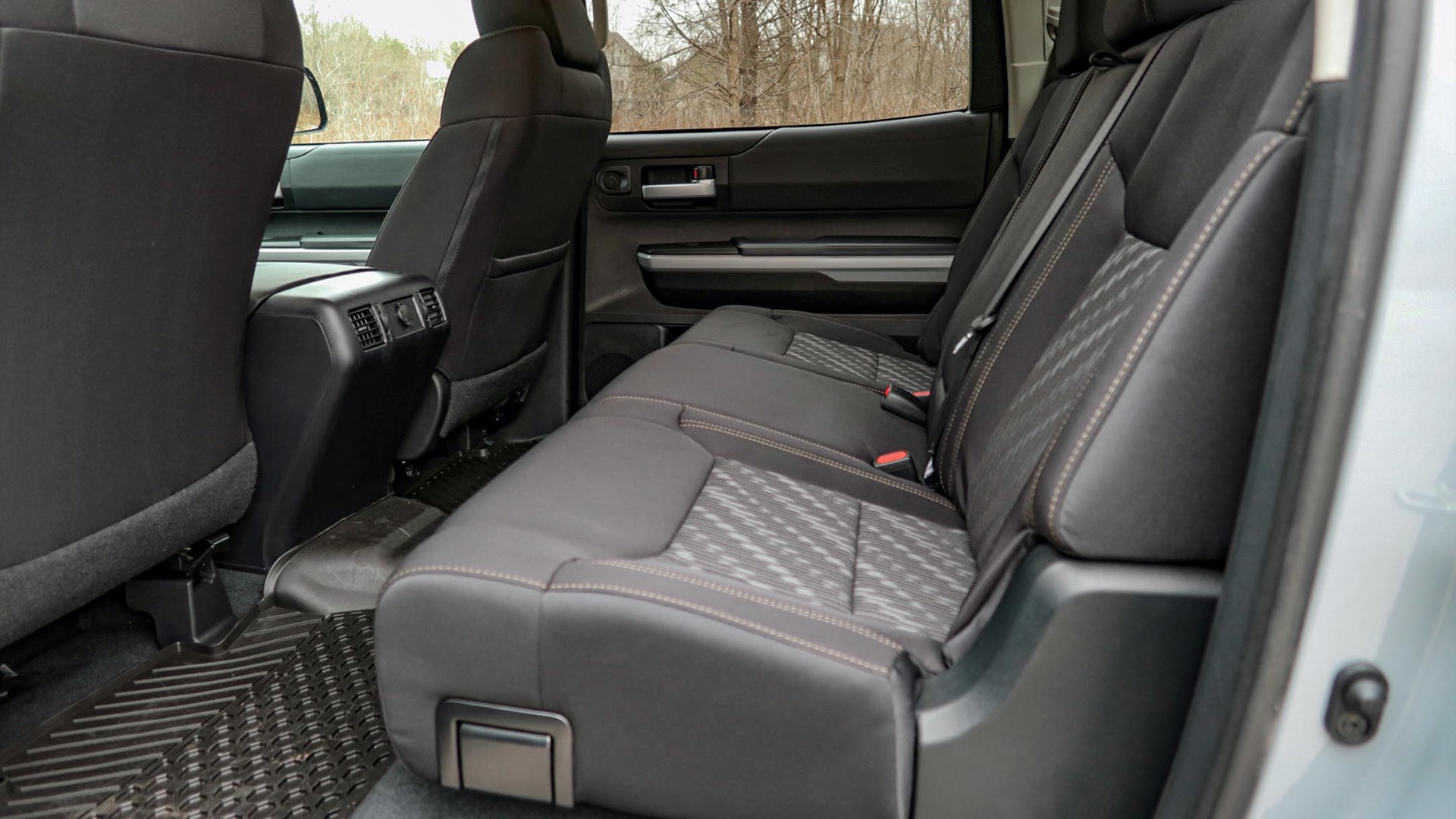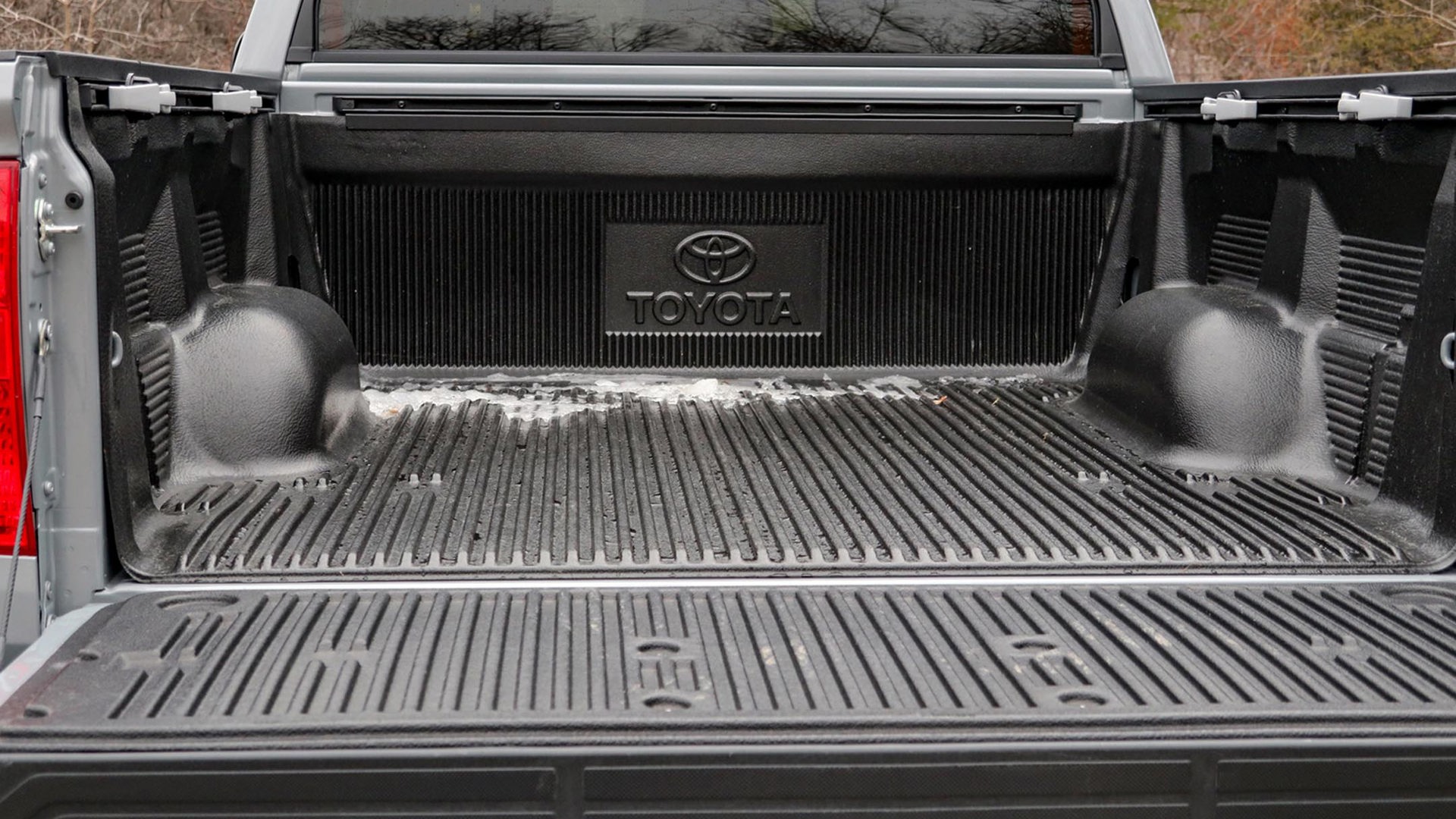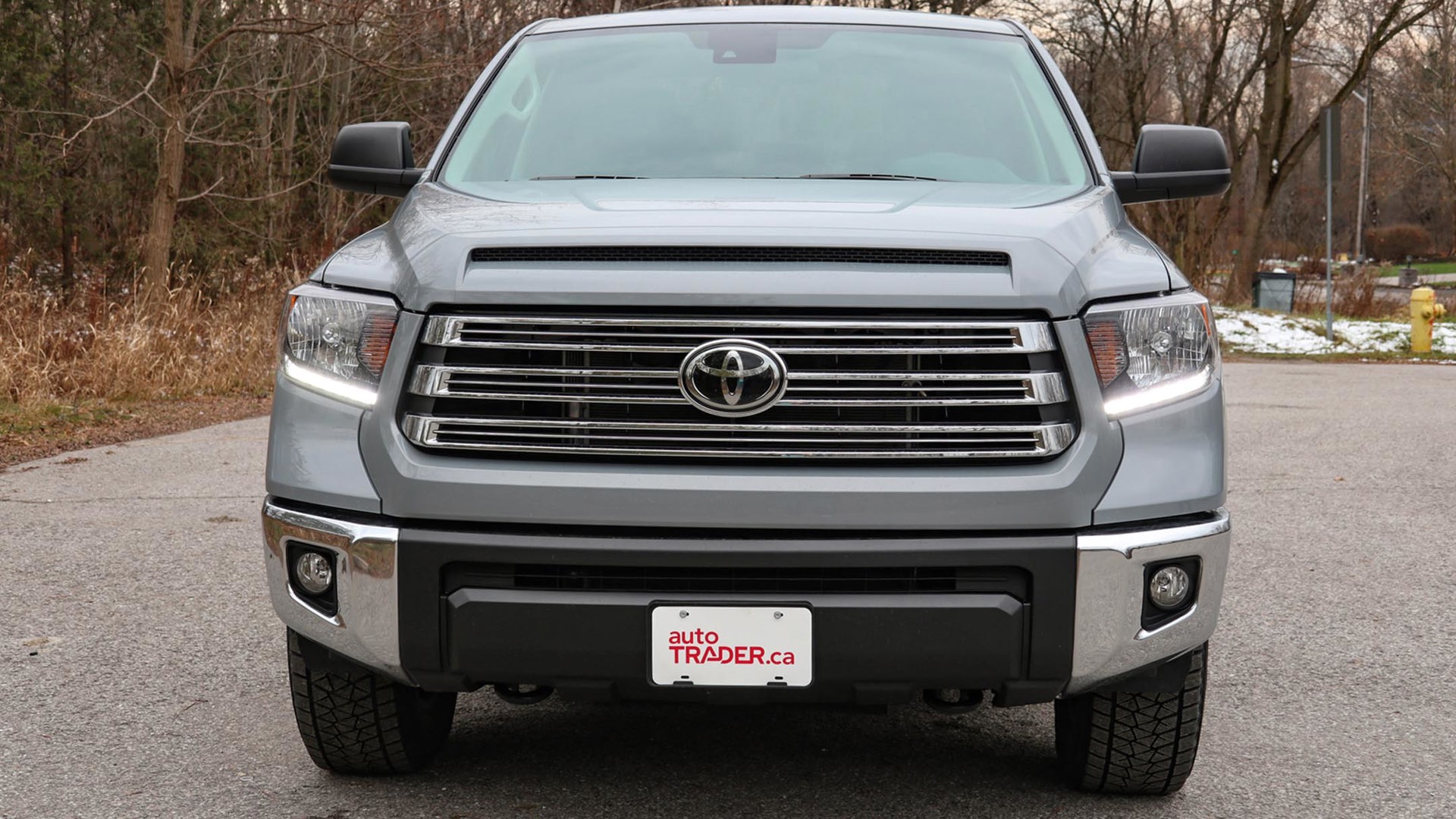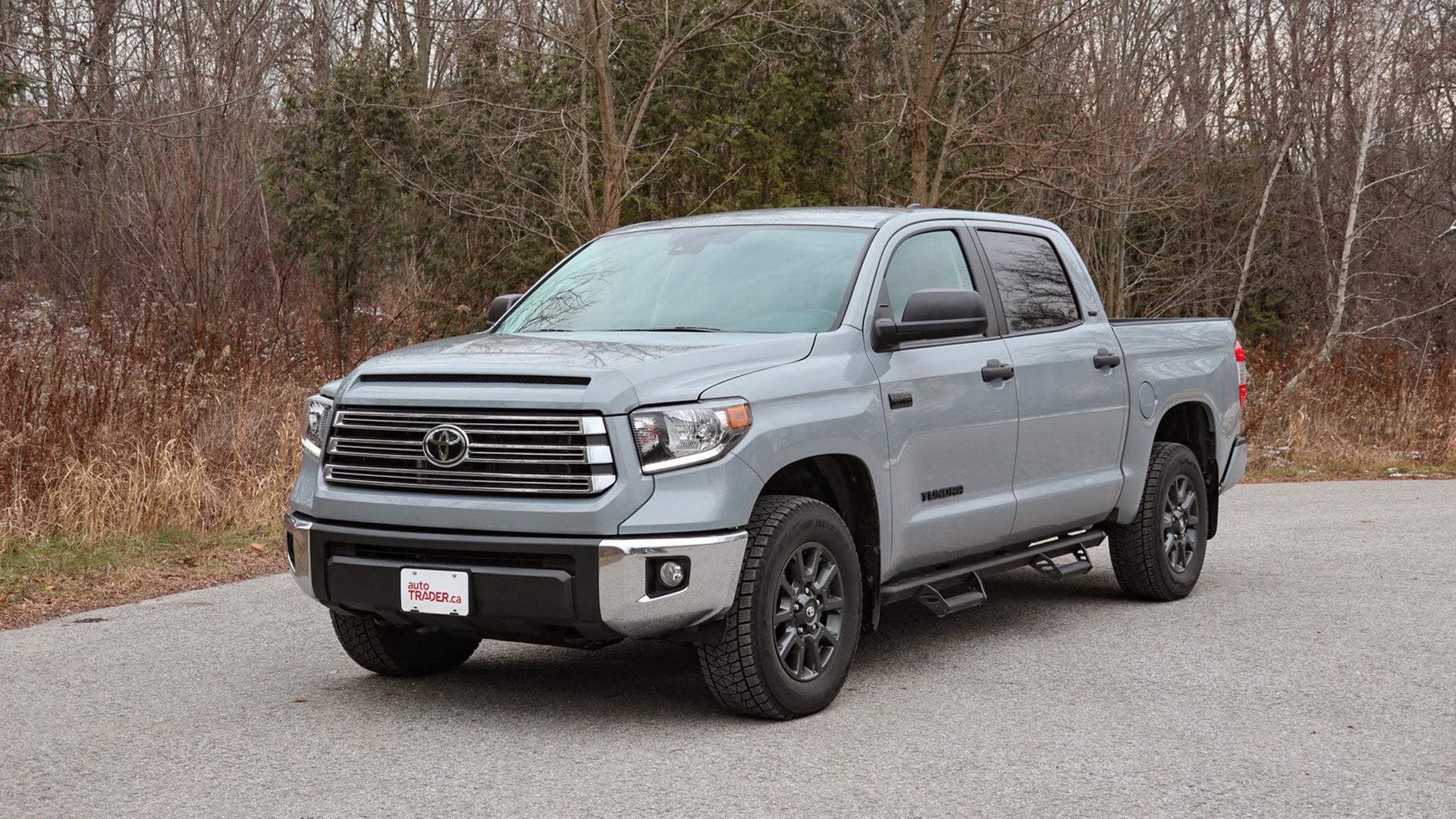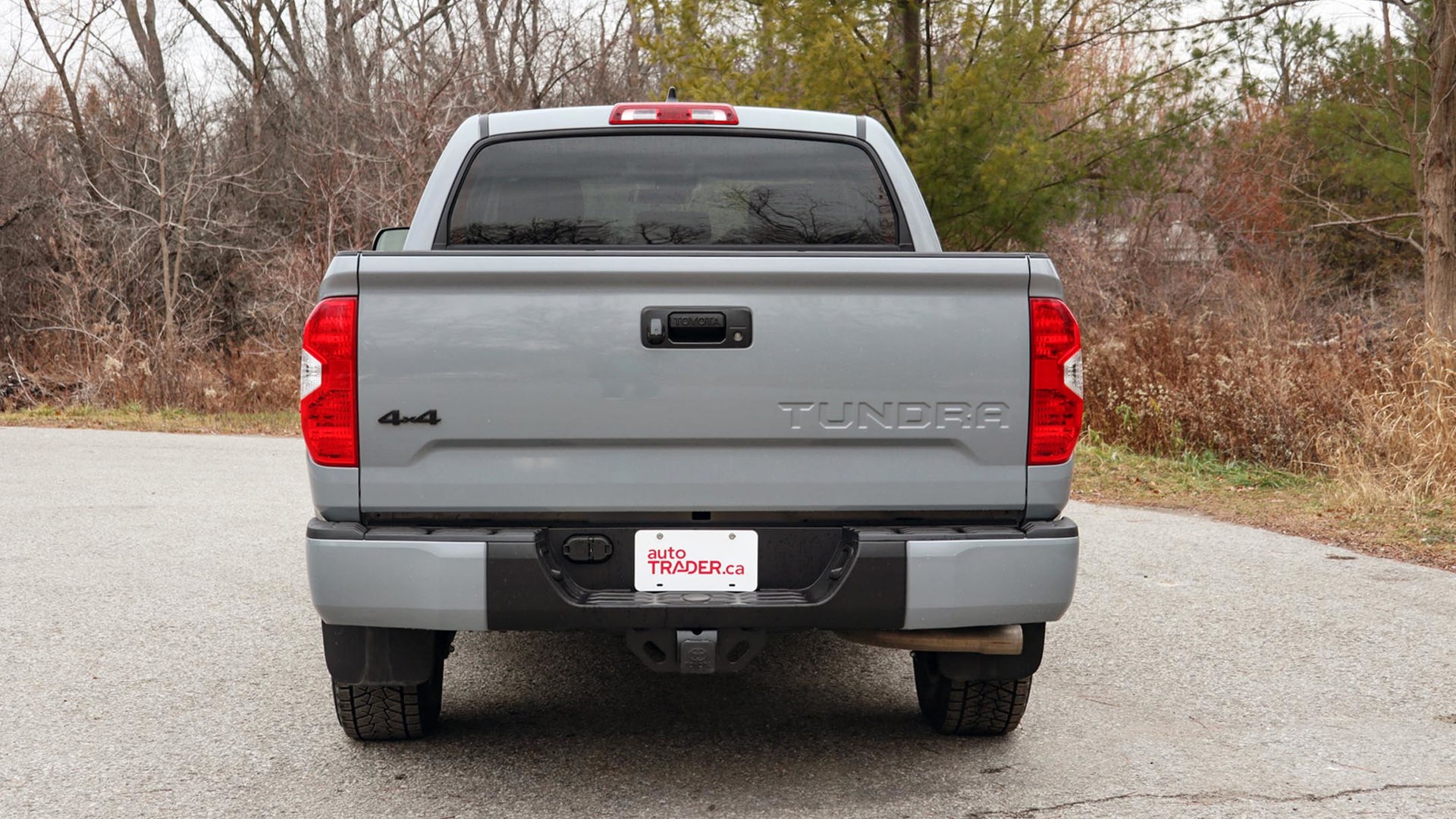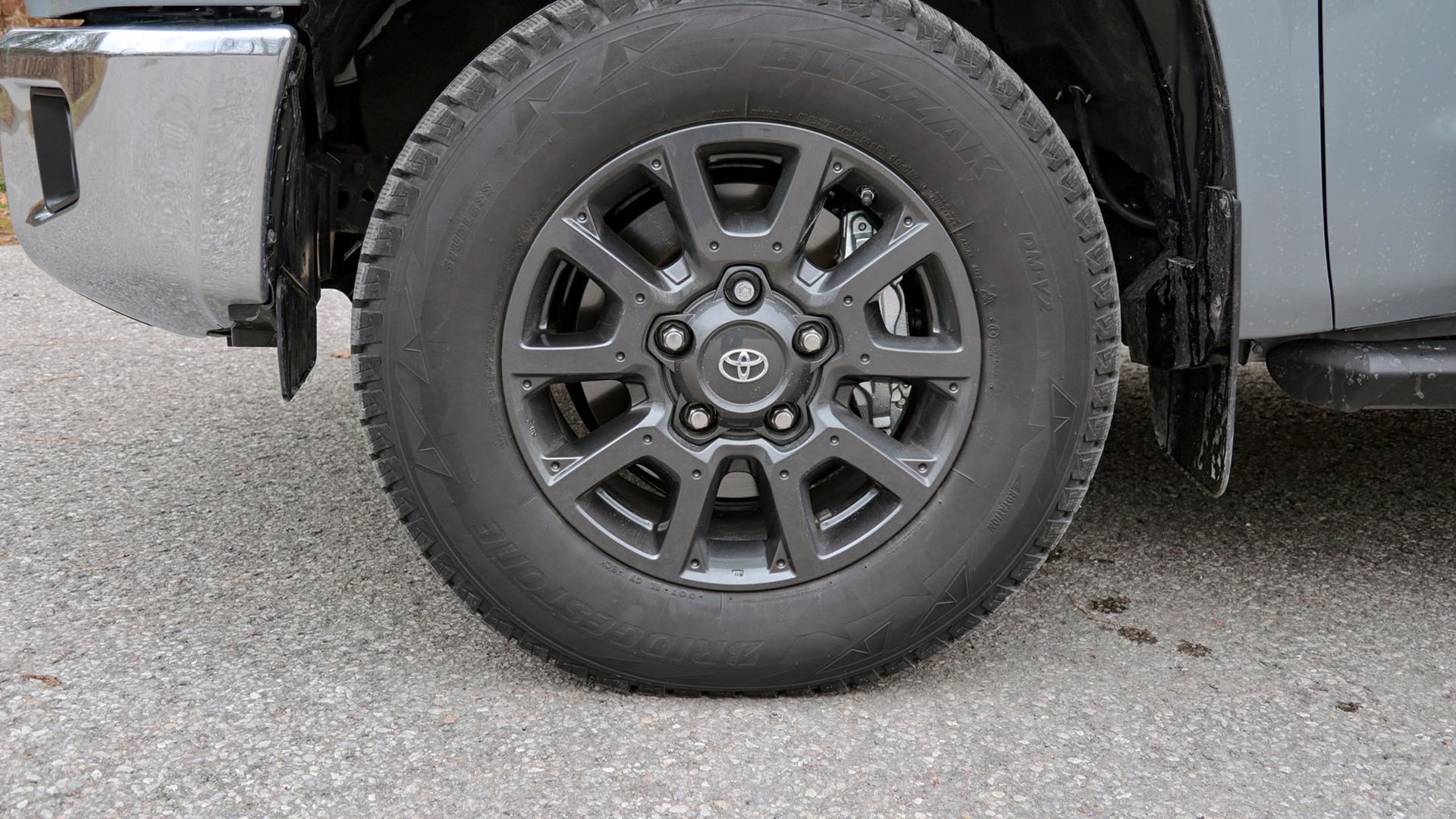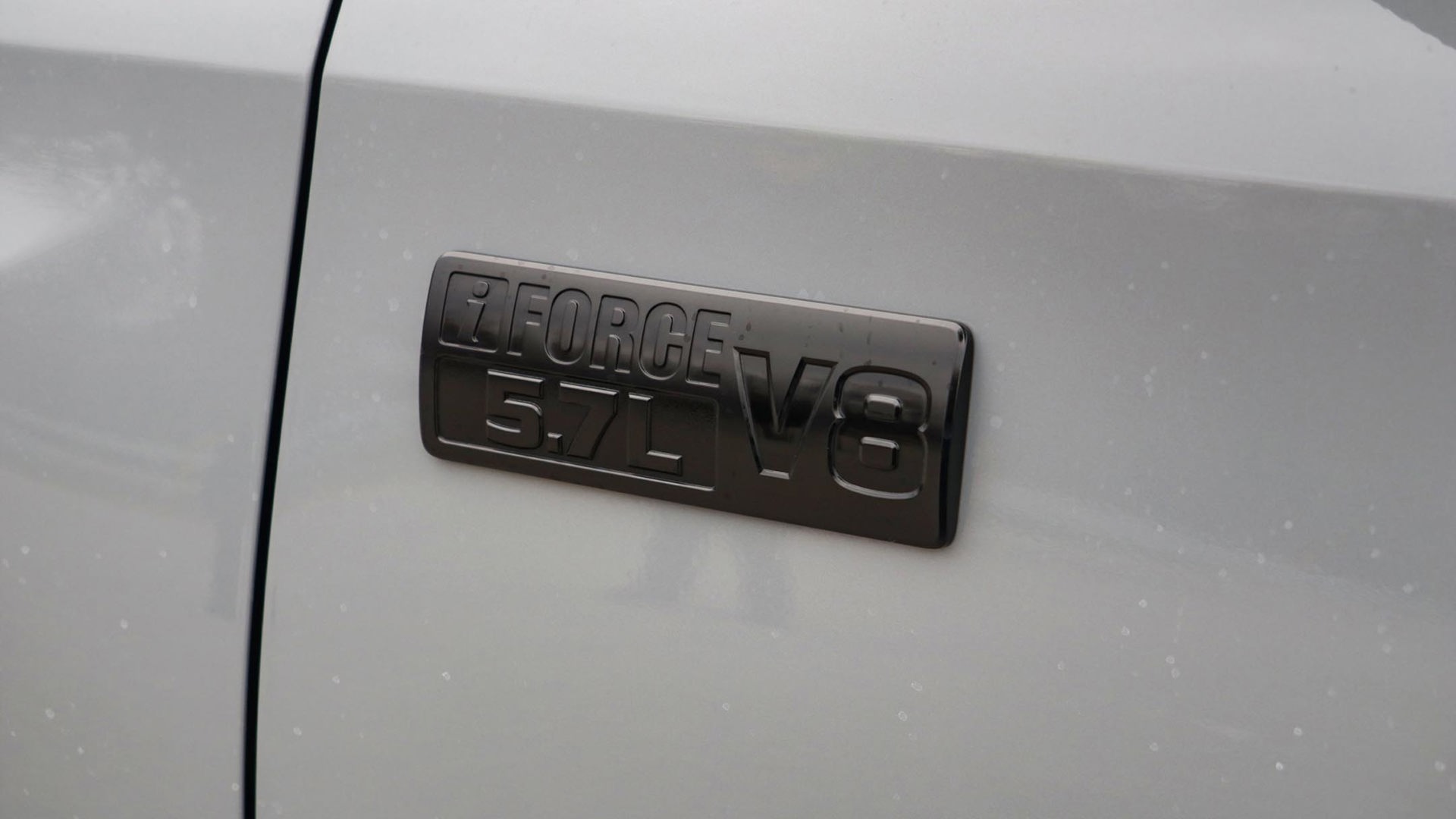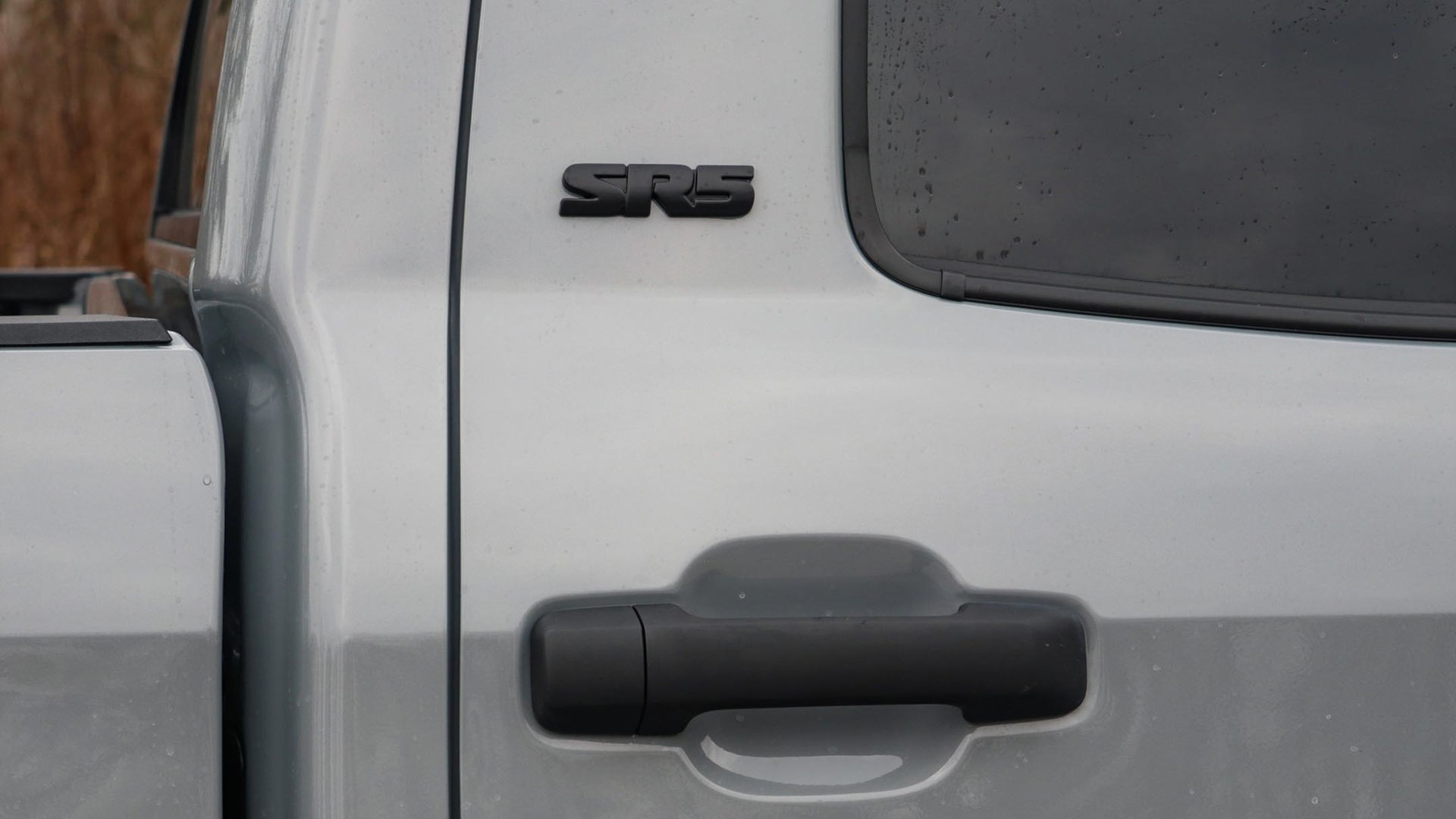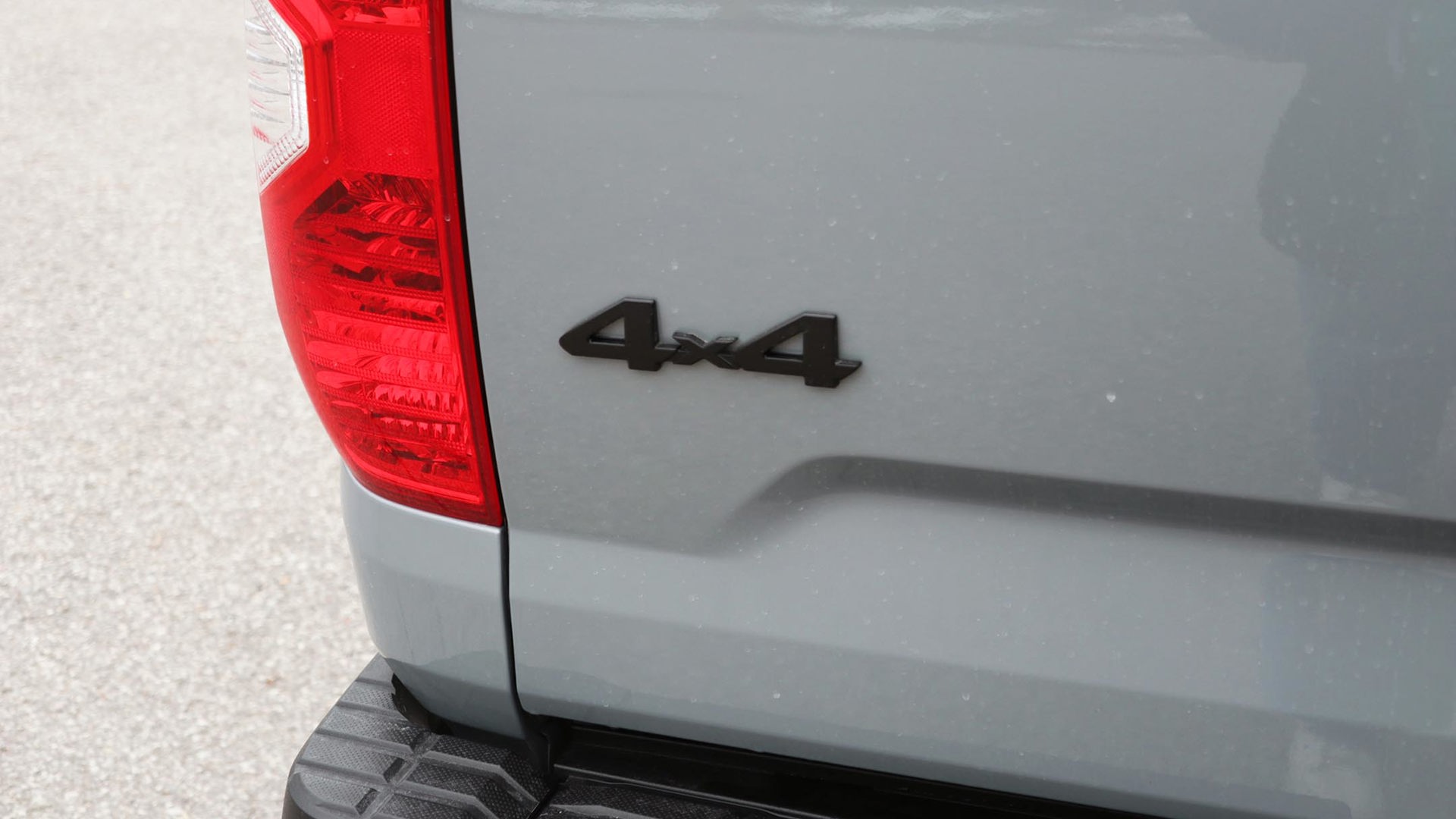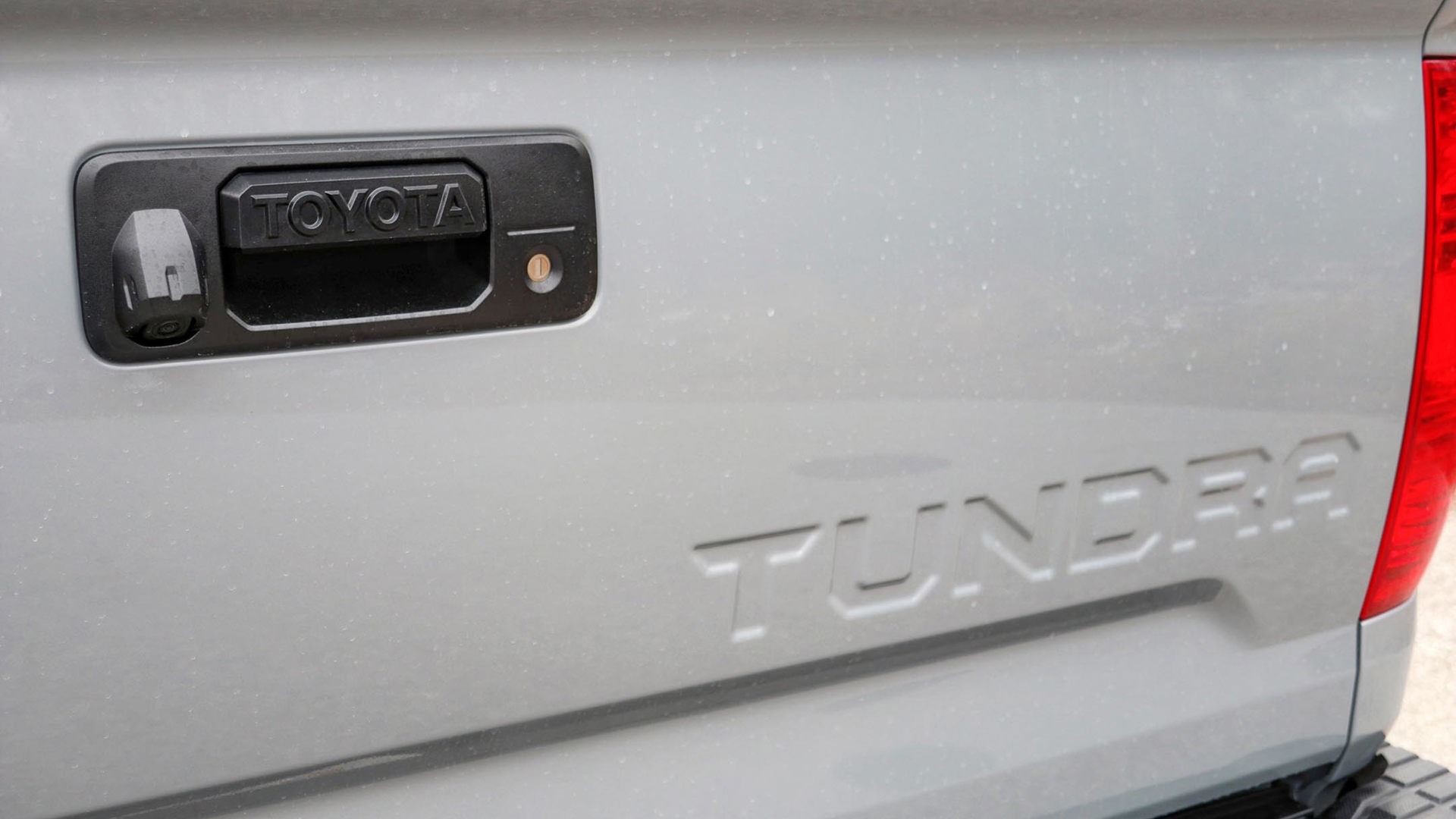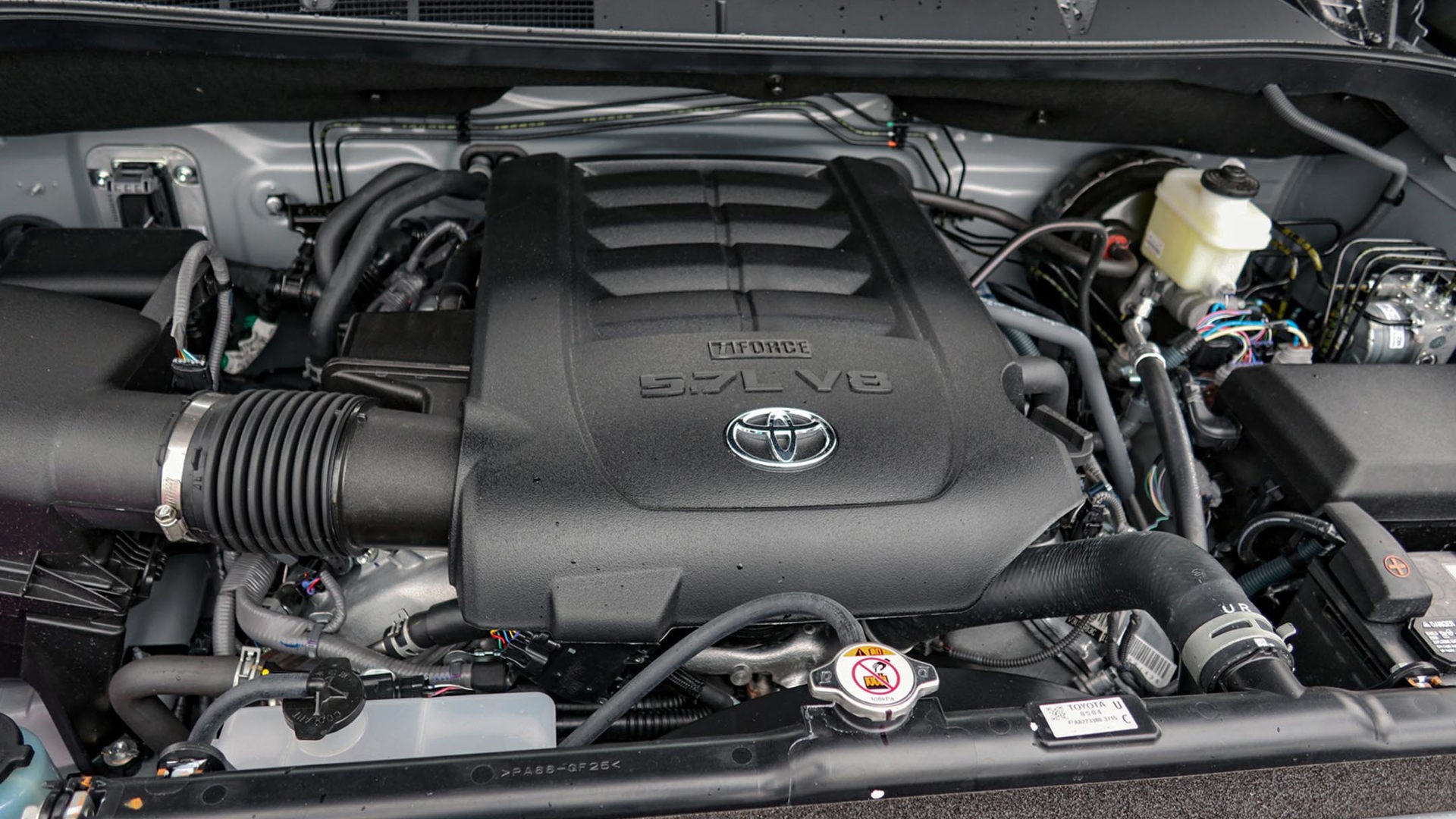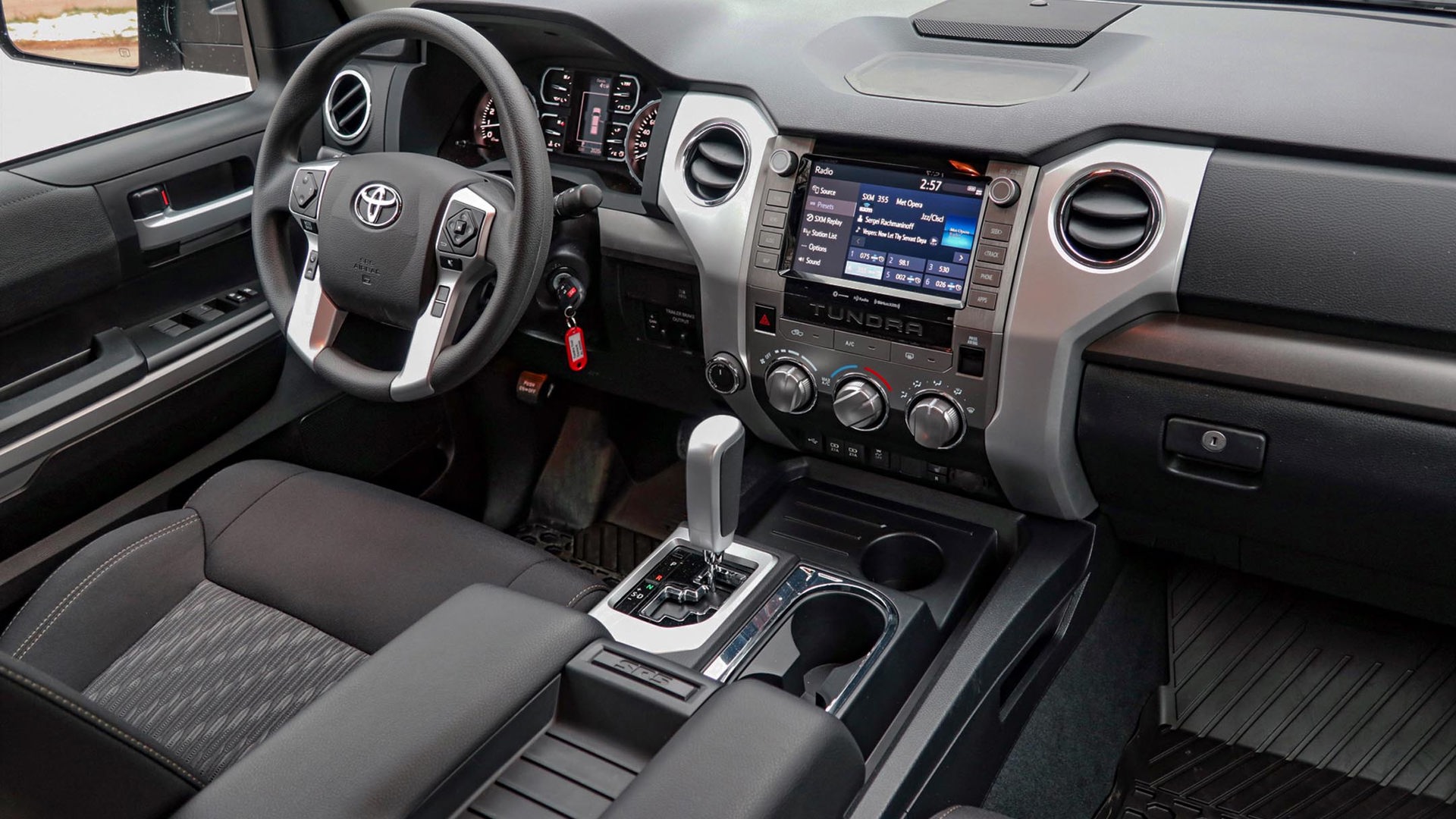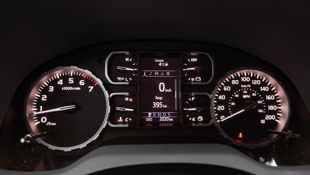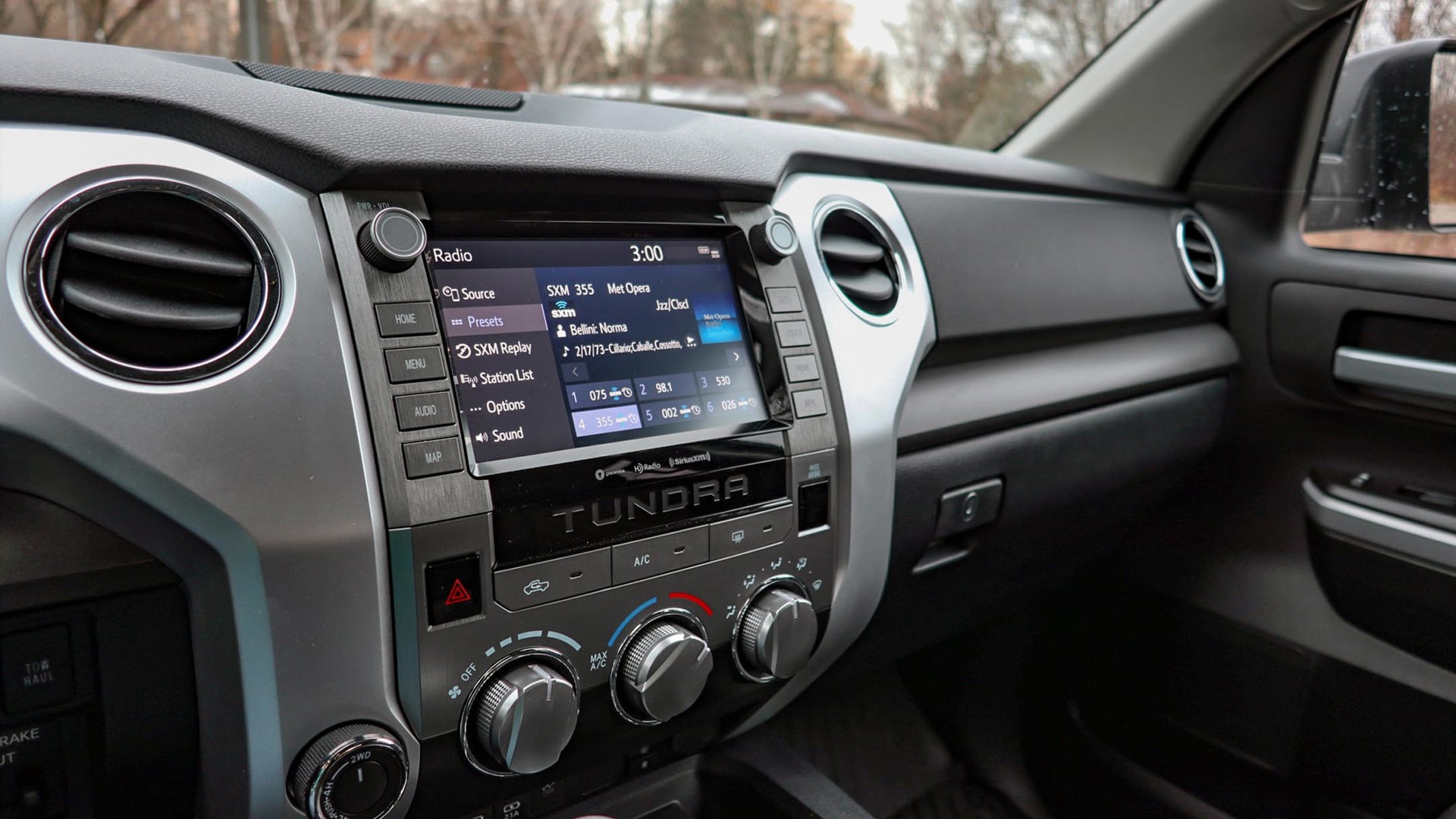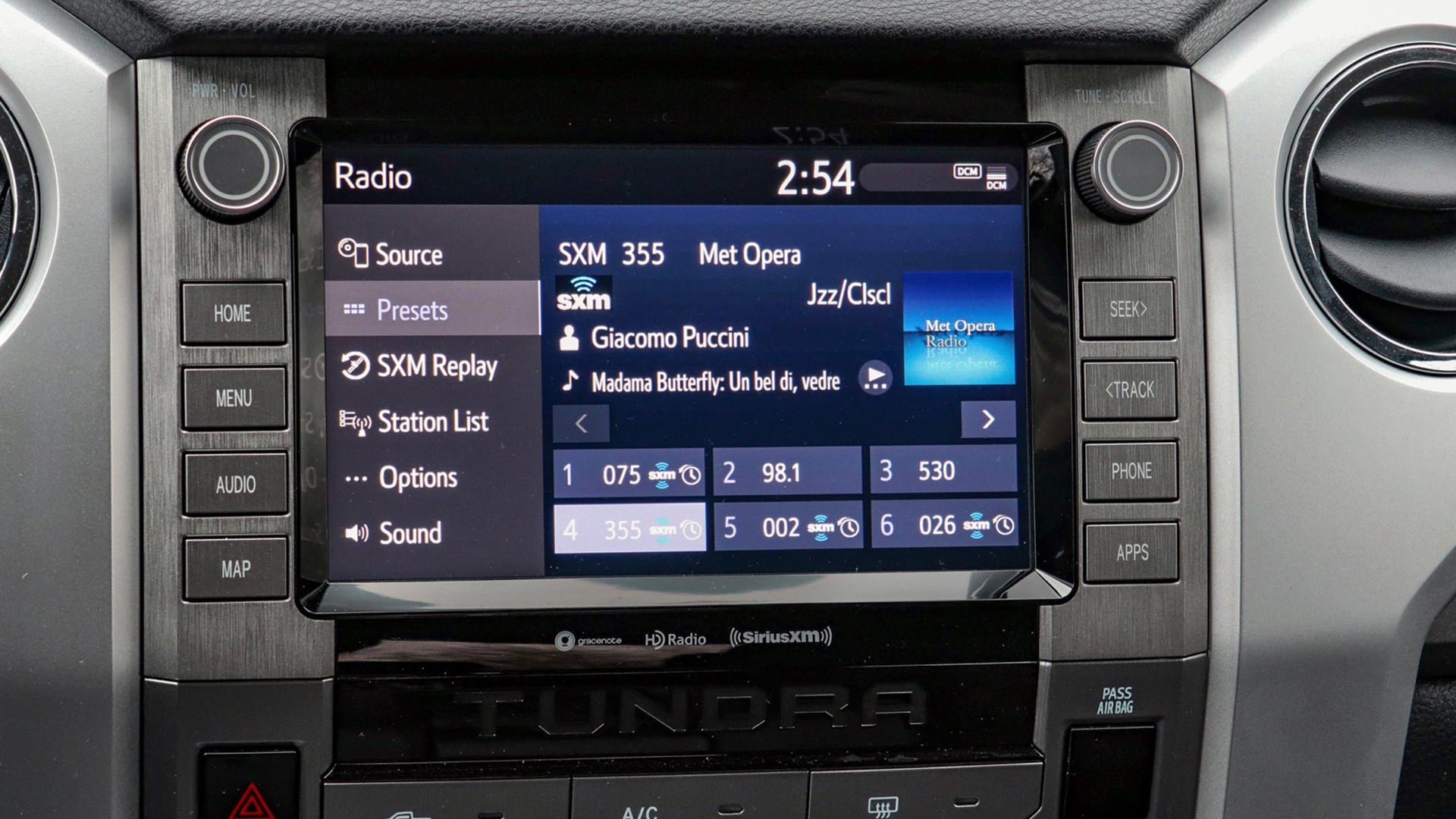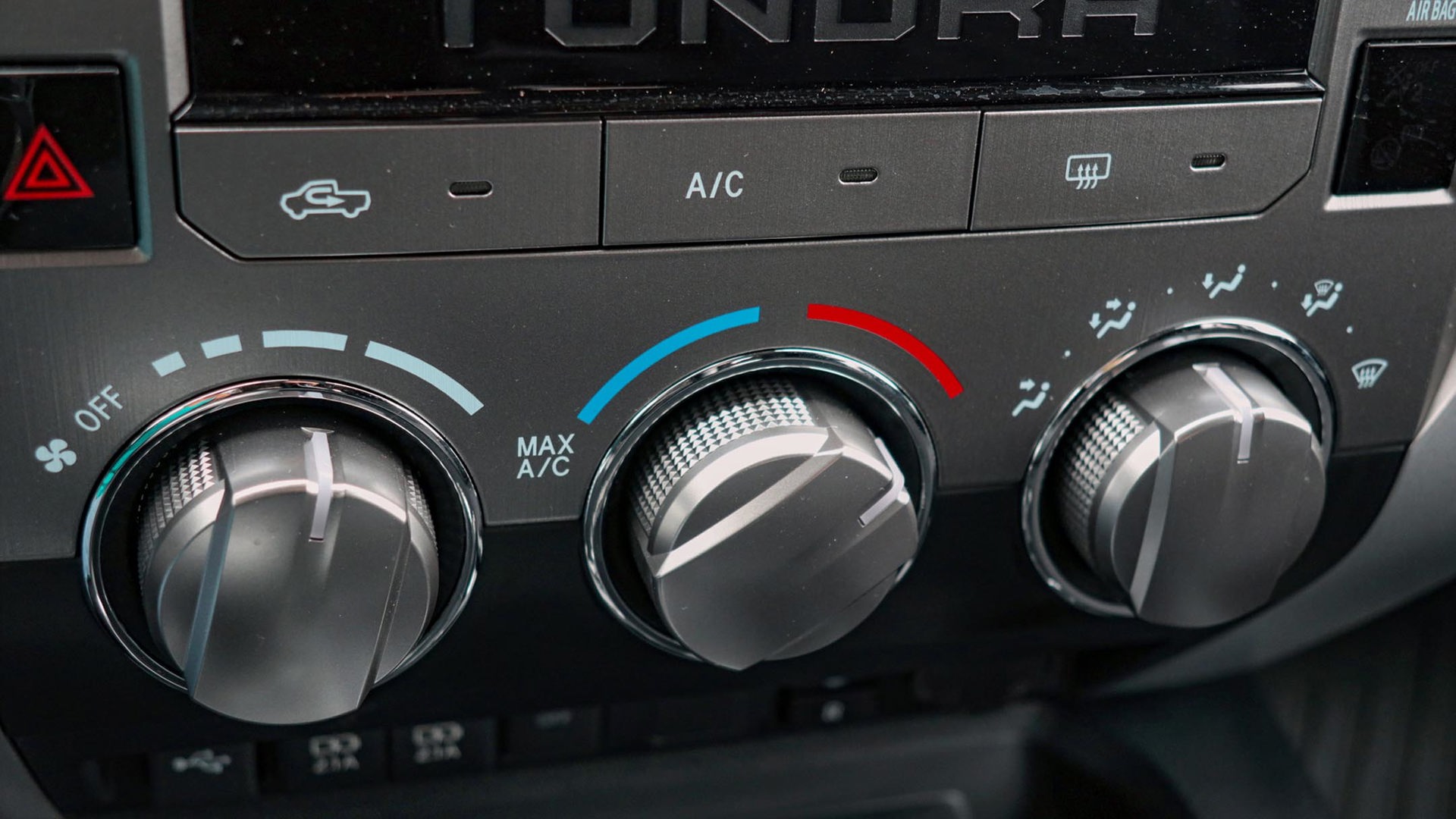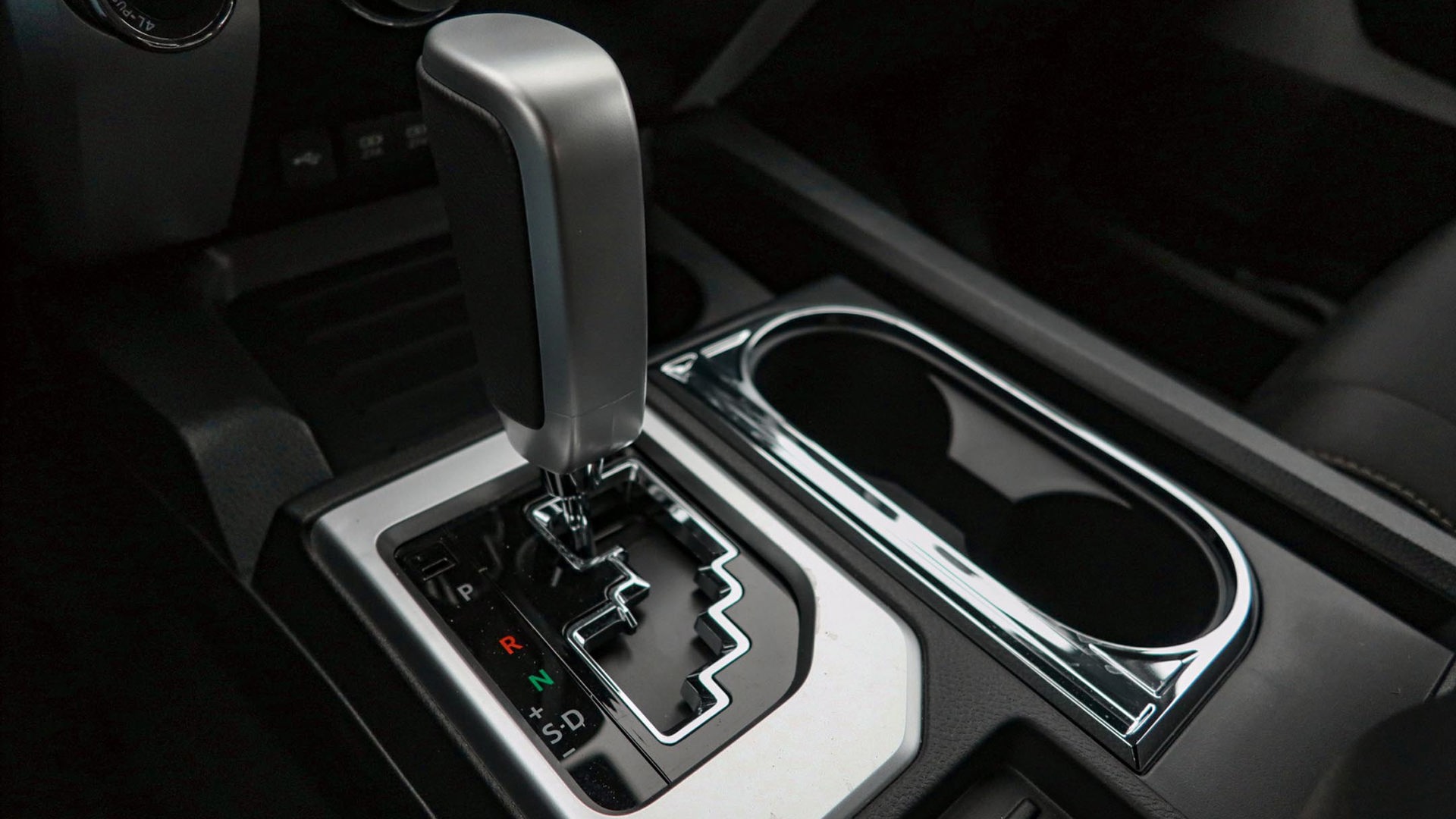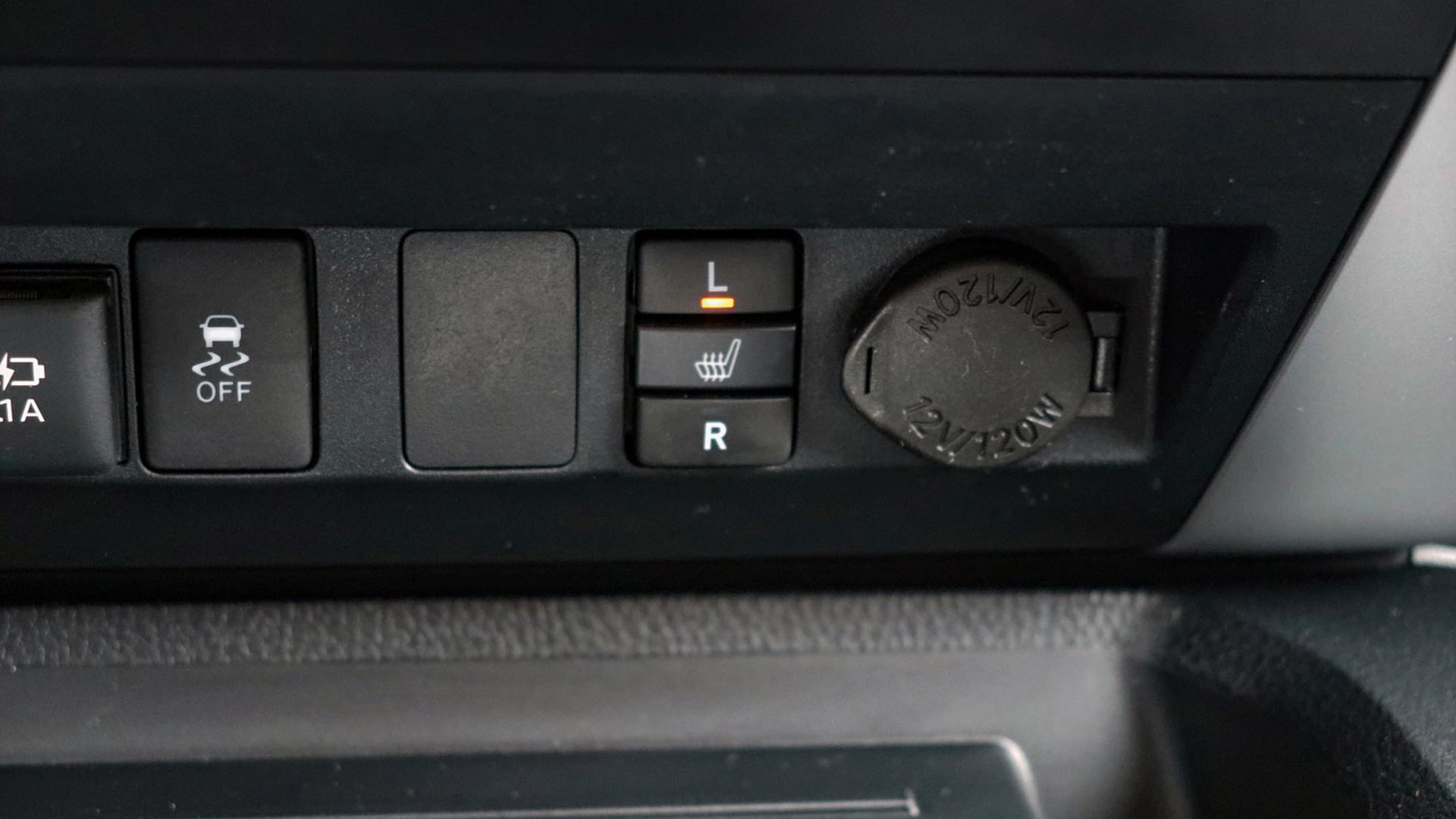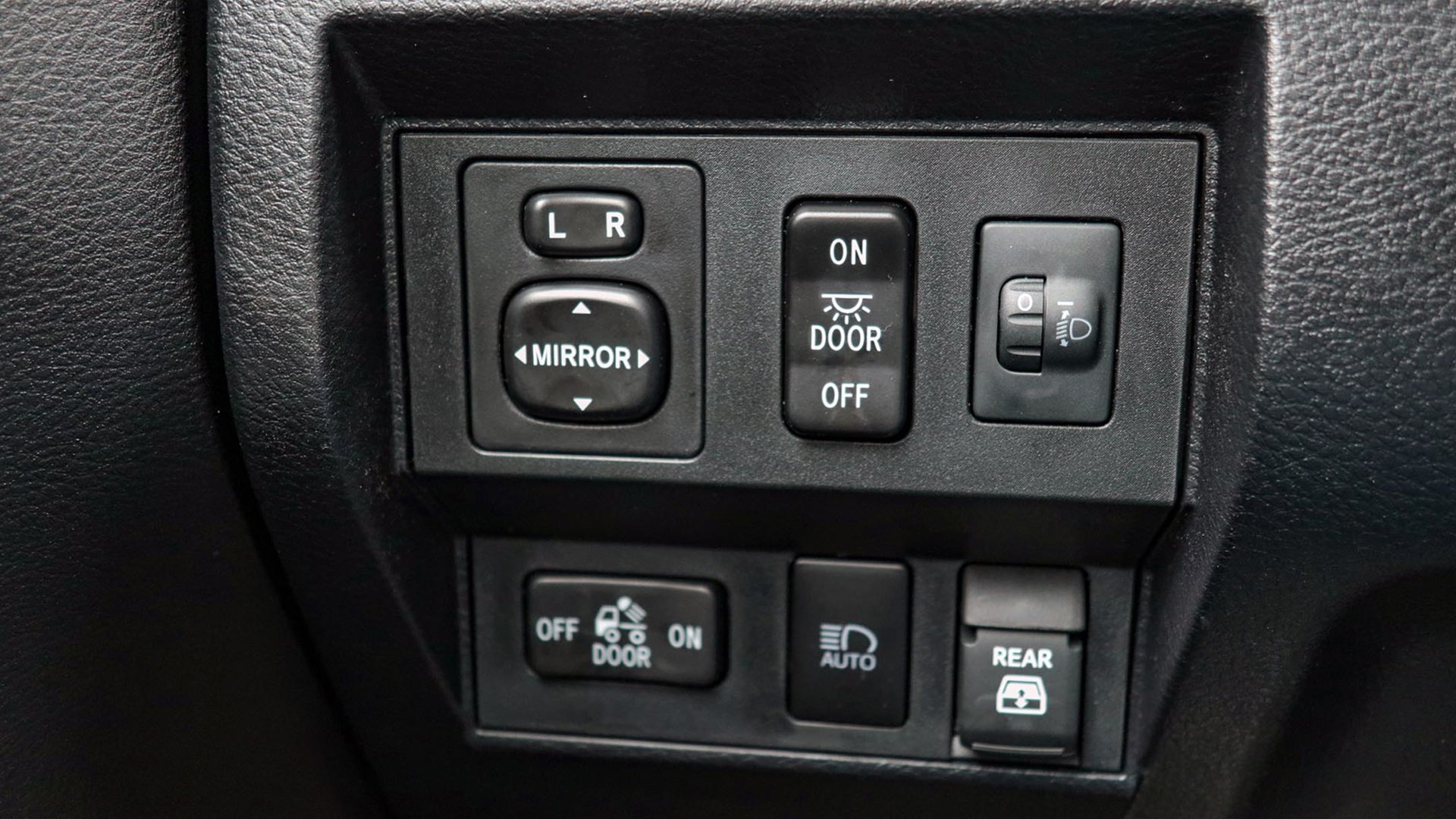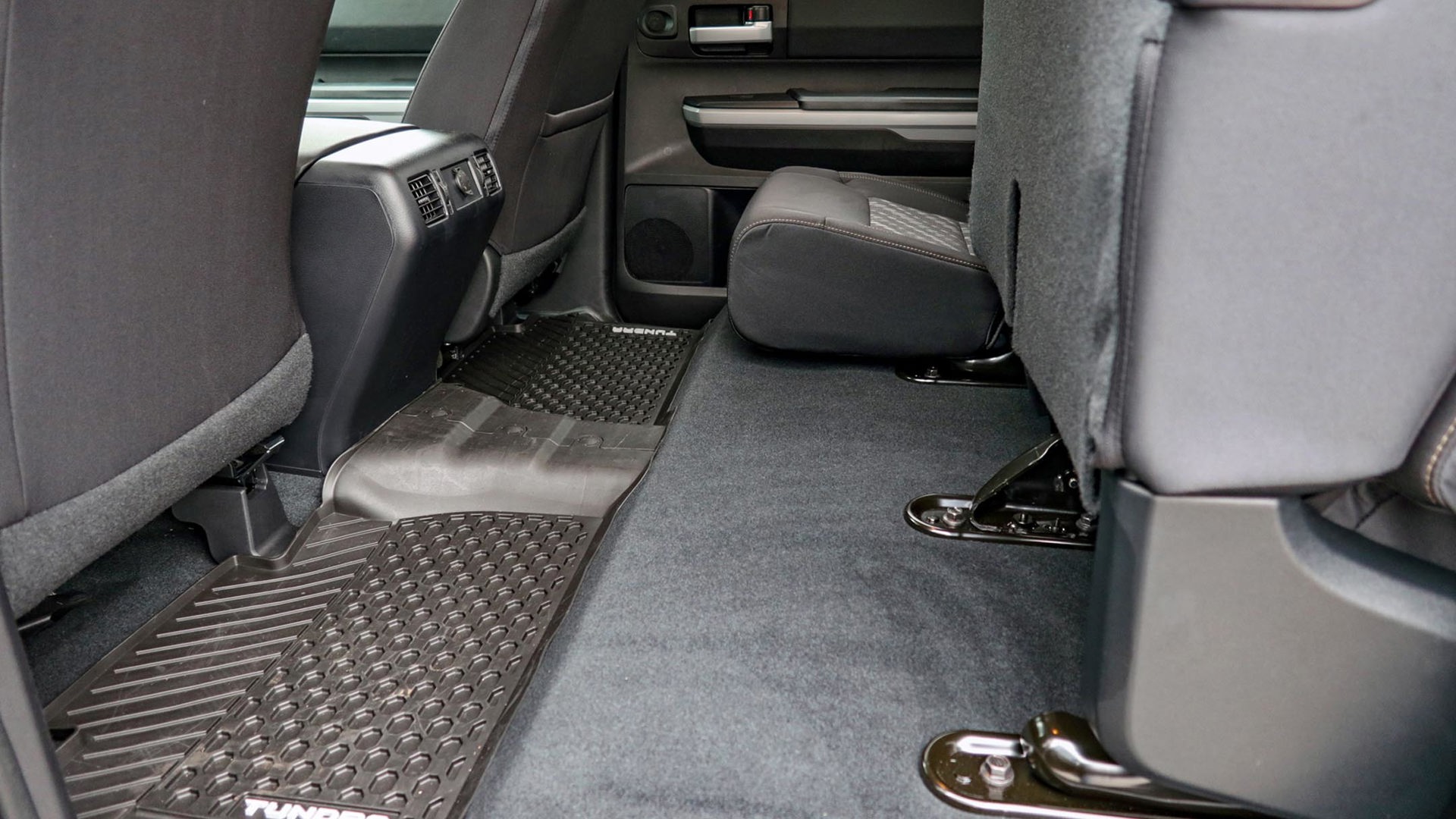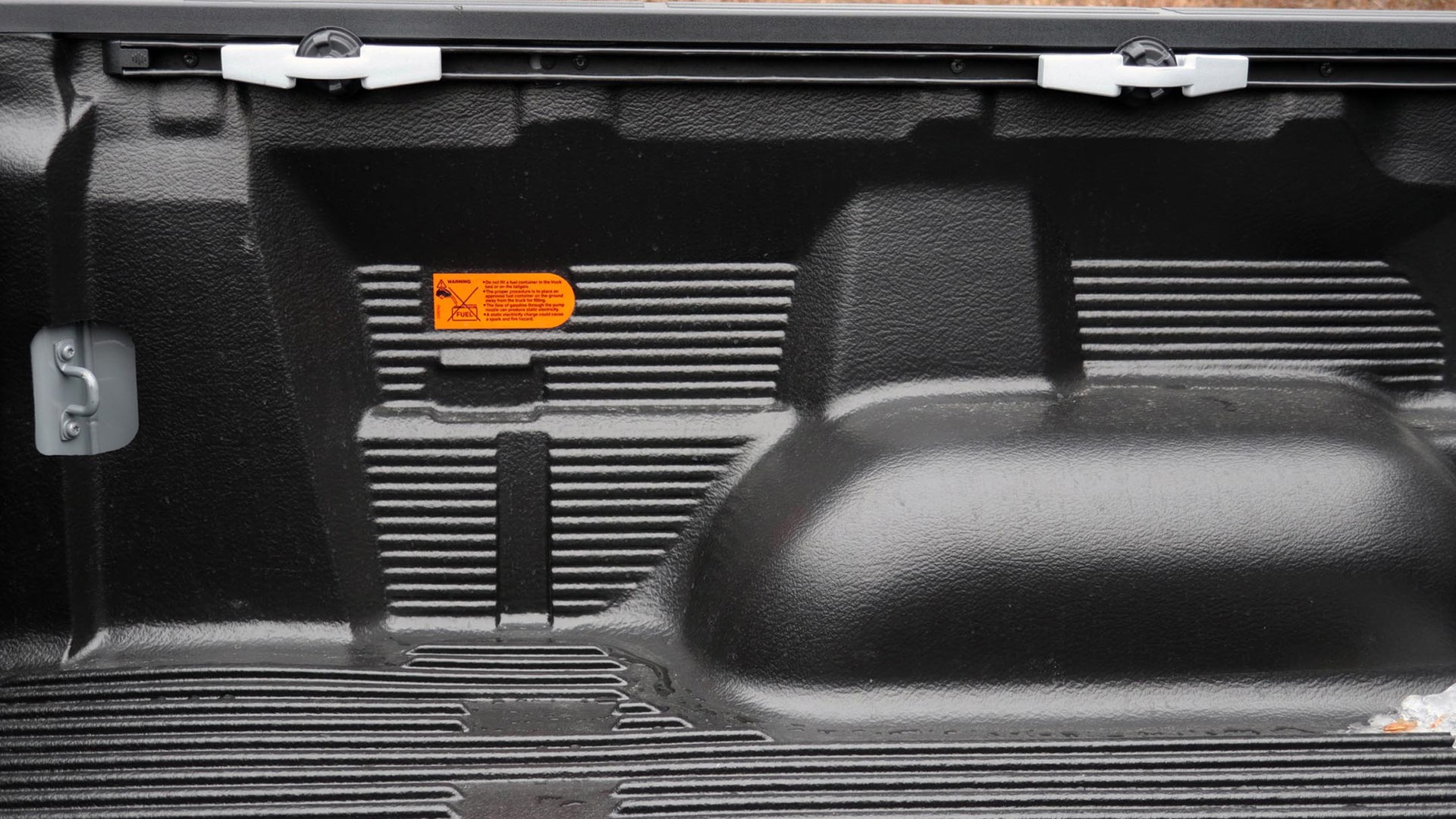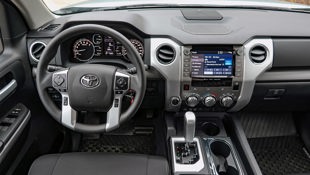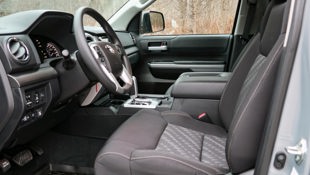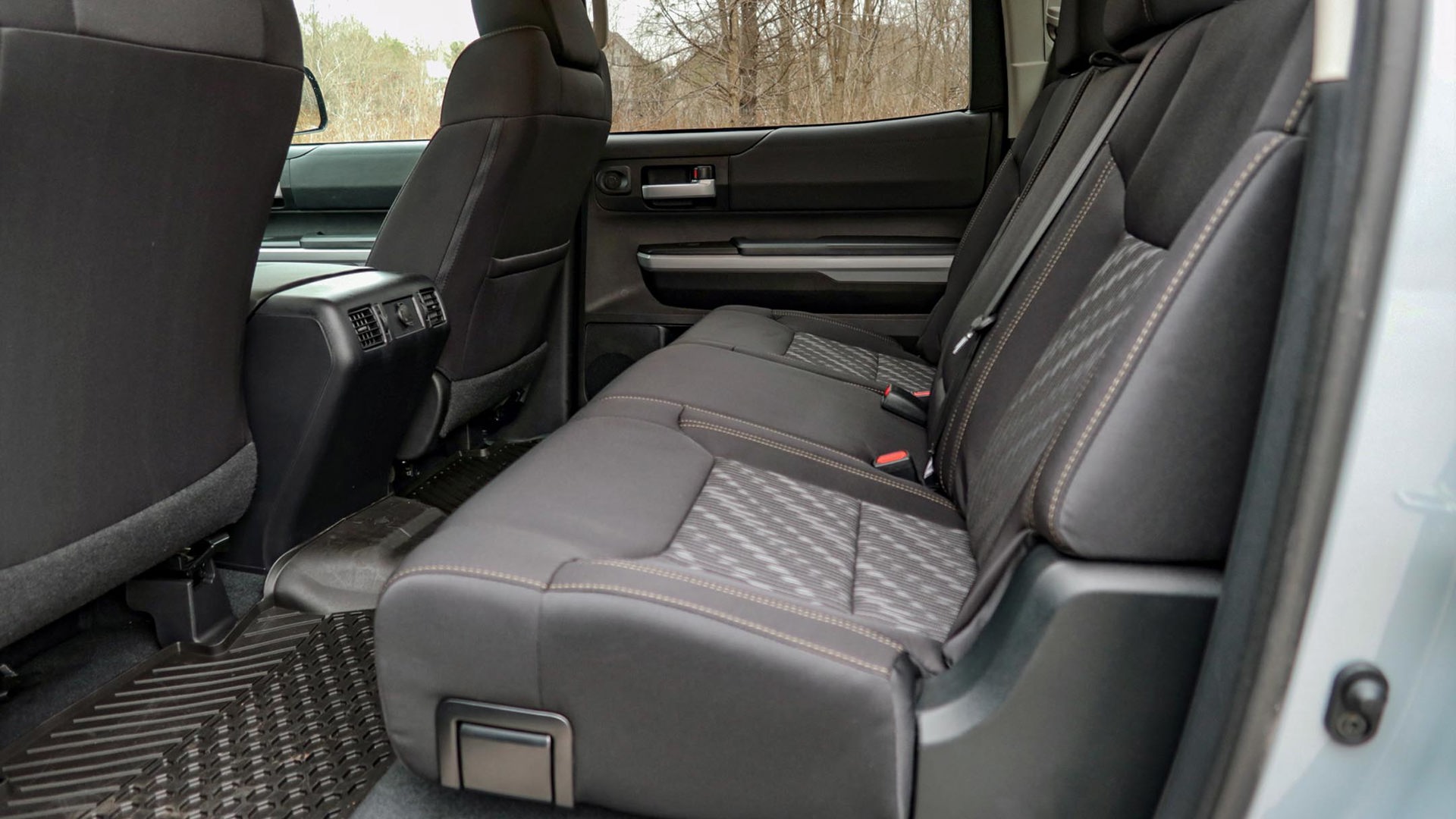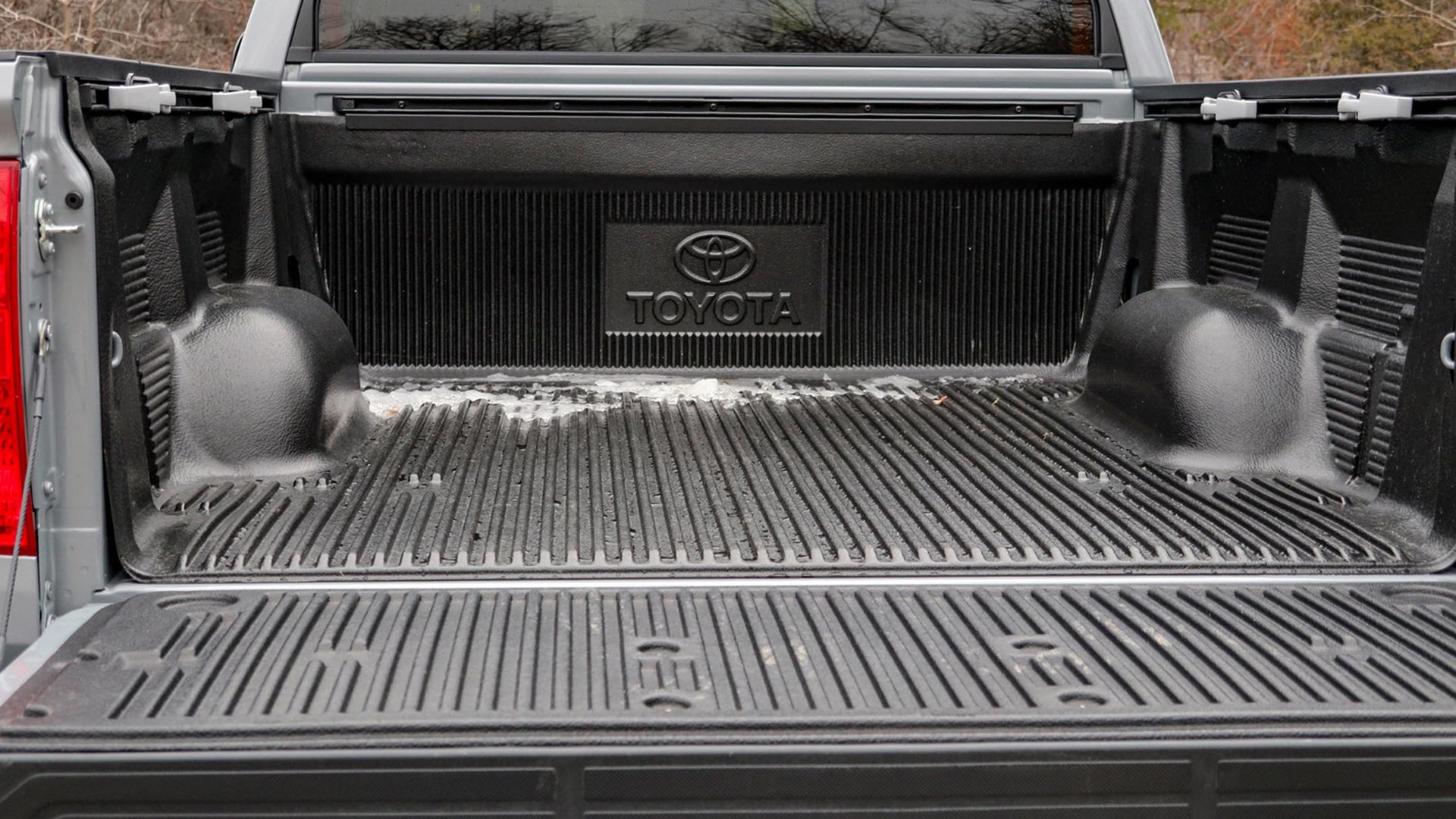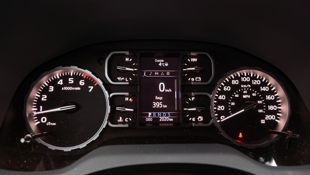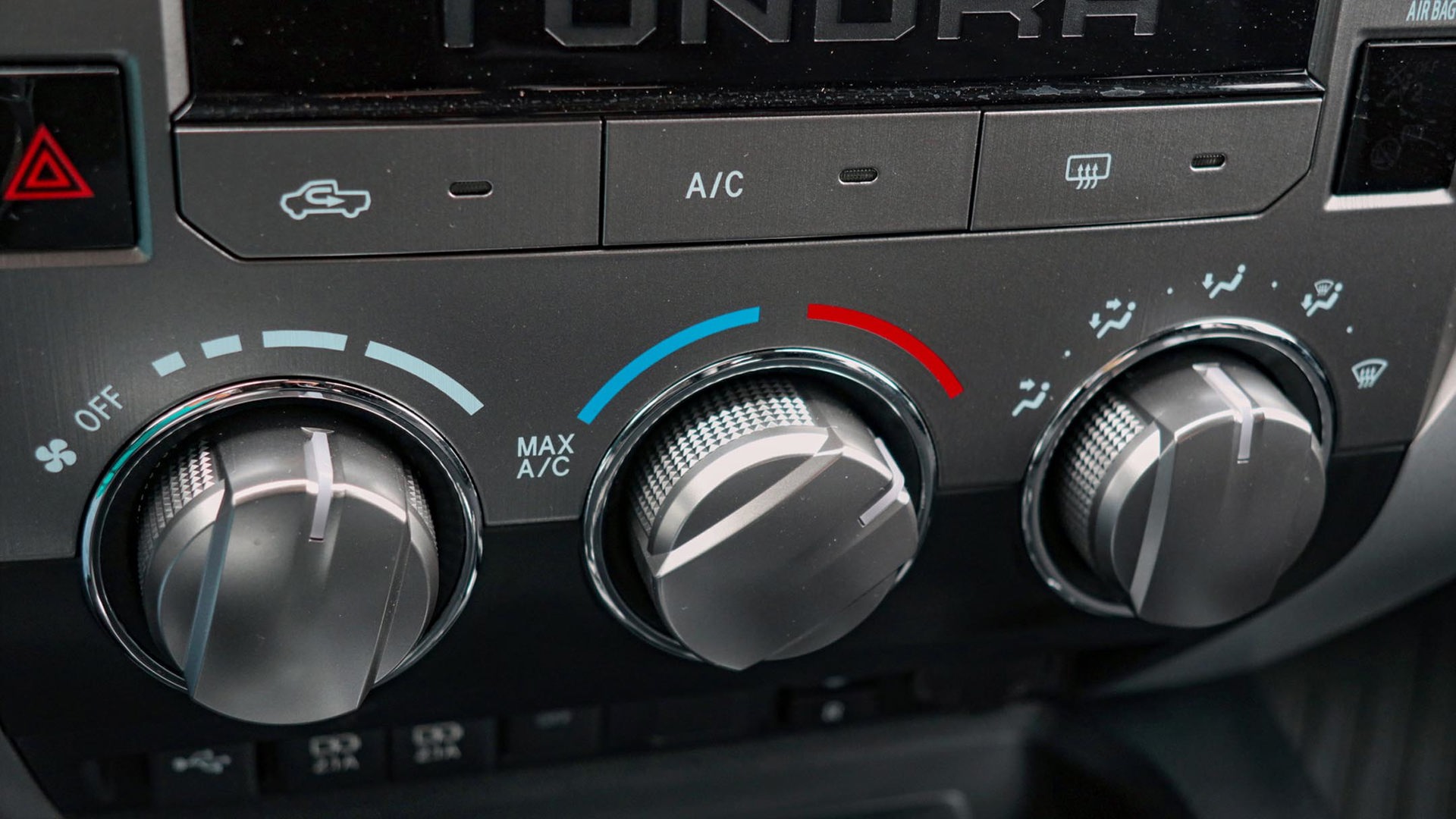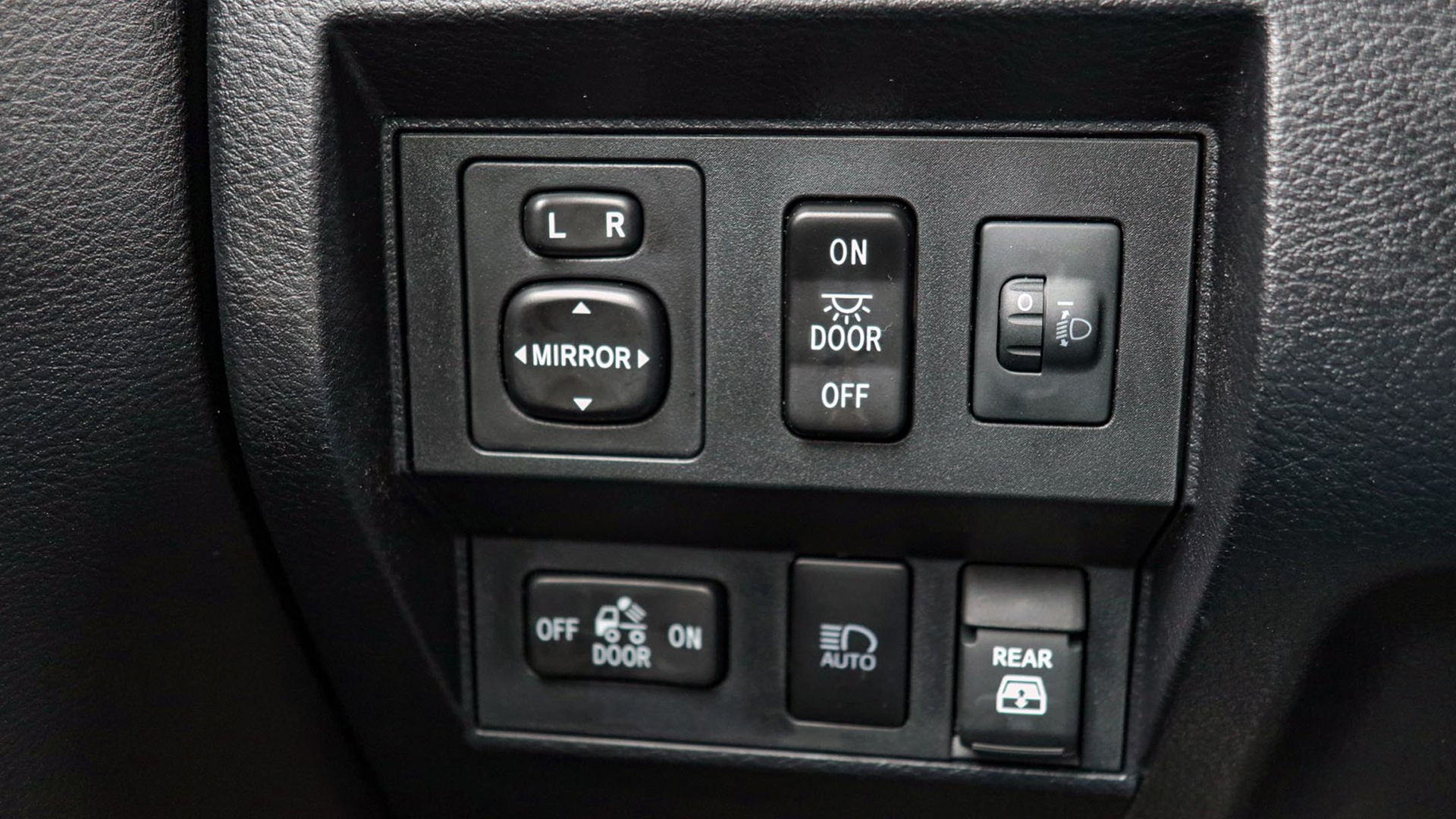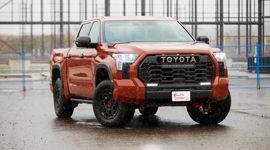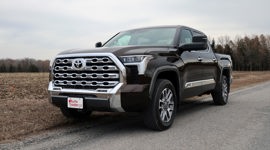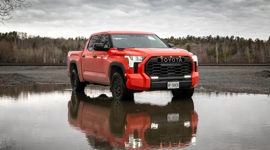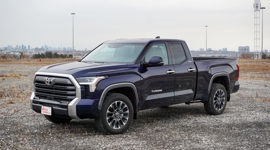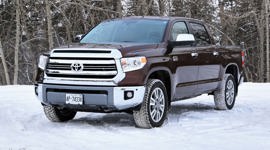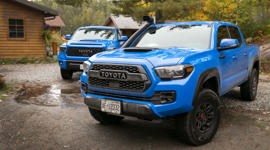 AutoTrader SCORE
AutoTrader SCORE
-
STYLING8/10
-
Safety8/10
-
PRACTICALITY8/10
-
USER-FRIENDLINESS8/10
-
FEATURES8/10
-
POWER8/10
-
COMFORT8/10
-
DRIVING FEEL7/10
-
FUEL ECONOMY6/10
-
VALUE8/10
Canadians love pickup trucks, but our loyalties can be all over the map.
Toyota’s Tacoma consistently outsells all other midsize models, but the brand’s bigger offering trails its Detroit Three by a wide margin. No doubt as a result, the Toyota Tundra doesn’t get a lot of regular updates – although that may also play a large role in its consistently high reliability ratings.
Every Tundra comes with standard four-wheel drive and with four doors starting at $46,610. Upgrading to a full quad cab like my tester brings the price to $47,680 in base SR5 trim. I further had the new 2021 Toyota Tundra Trail option package, which adds $3,640 and which brought my truck to $51,320 before freight and taxes.
Styling: 8.5/10
While it’s needlessly oversized as all trucks are today, the Tundra is a good-looking beast. The design is simple and classic, looking tough and rugged without being too in-your-face about it. My truck was clad in an exterior grey paint dubbed Cement, which suited it very well.
The Trail package adds dark grey 18-inch wheels, black badges, a grille from the premium 1794 trim with a colour-keyed surround, and off-road-inspired side step bars that have their pros and cons. They’re good for getting into the truck, where they provide a toe hold without being too wide, but when getting out, I found my heel frequently slipped off their narrow step surface.
Safety: 8/10
The Tundra gets mixed reviews from the two major United States safety supervisors. The National Highway Traffic Safety Administration (NHTSA) gives it a four-star rating overall, one below its highest five-star (broken down into five for side crash, and four each for frontal and rollover crashes). The Insurance Institute for Highway Safety (IIHS) gives it the highest Good rating for side and moderate front overlap crashes, plus seats and head restraints; Acceptable for roof strength; Marginal for driver-side small overlap crash; and Poor for passenger-side small overlap.
My score reflects a suite of high-tech safety items that’s standard equipment. For that, you get adaptive cruise control, emergency front braking with pedestrian detection, lane-departure alert with steering assist, and automatic high-beam headlights. Back-up cameras are mandatory on all new vehicles, and so the Tundra includes one as well.
Practicality: 8.5/10
Beyond the inherent practicality of a pickup, the Tundra’s high points include a damped tailgate, four moveable bed-mounted tie-down cleats, a large console storage box, a cubby atop the dash, and rear seat cushions that flip up for extra cargo space. Towing capacity is 4,445 kg (9,800 lb) for the models with four full-size doors, and 4,491 kg (9,900 lb) for the smaller rear quarters. That doesn’t sound as impressive as some competitors, but the top numbers advertised are for the model lineup overall, and they may be for a regular cab or a truck with rear-drive configuration. If you’re cross-shopping, be sure you match the competitor’s truck to the Tundra’s cab configuration and its standard four-wheel driveline.
If there’s a fault, it’s that, like the Ram 1500, the Tundra doesn’t provide any easy way to get up into its tall bed when the tailgate is down. General Motors (GM) has brilliantly simple bumper-end steps, and Ford has a pull-out step in the tailgate, but unless you pay $480 extra for an accessory rear bumper step, you’ve got nothing here.
User Friendliness: 8.5/10
Big-and-simple is my takeaway for controls, and the Tundra delivers. The dash may seem a bit outdated against its competitors, but I love the huge dials for the climate control, the hard buttons to bring up the infotainment menus, and the big icons once you get there. The controls on the steering wheel are equally intuitive and easy to use.
There are only a couple of quibbles. The buttons for the heated seats are tiny and half-hidden at the bottom of the centre stack. Fortunately, once you turn them on, they stay on until you switch them off again, even if you shut off the ignition. I’m also not keen on the mirror switch, which is flat against the dash – a dial or door-mounted control is easier to use – and is one of the few controls that isn’t backlit at night. However, the mirrors are big – as they should be on any truck – and provide good visibility of what’s around you.
Features: 8/10
The Tundra comes in two trim levels: my SR5 tester, which can be upgraded with any of five option packages, and the top-trim Platinum, which can be optioned with the 1794 Edition package.
The SR5 includes such items as heated cloth seats with eight-way driver power adjustment, an eight-inch touchscreen, Apple CarPlay and Android Auto, satellite radio, 4.2-inch multi-information instrument cluster display, 60/40-split bench rear seat with fold-up cushions, trailer brake connector, bed rails with four cleats, fog lights, manual-levelling headlights (which should be on all trucks), and a power back window that disappears down into the cab, rather than sliding sideways. The Trail package is mostly exterior appearance, except for contrasting interior seat stitching. About the only item I’d really like to add, and which isn’t available, is a heated steering wheel.
Power: 8/10
The Tundra is powered exclusively by a 5.7L V8 that makes 381 hp and 401 lb-ft of torque, mated to a six-speed automatic transmission. The Tundra is available in rear-wheel drive for American buyers, but in Canada every truck comes with four-wheel traction. It uses a two-speed transfer case with two-wheel drive, and high and low four-wheel drive settings. Since there’s no automatic setting, four-wheel drive should only be used on loose or slippery surfaces, not on hard pavement.
This is a big truck, but this equally big engine is a good fit to it, with plenty of strength for everyday driving and for towing. The six-speed transmission sounds dated in today’s world of multi-gear units – right up to 10 speeds in some trucks – but it gets the job done with a minimum of fuss.
Comfort: 8/10
The Tundra is a comfortable truck. There’s a lot of room, including for those in the rear seats. The chairs are well-bolstered, including the rear ones, and while the cushions are soft, the seats themselves are supportive. This is a truck you can drive all day and still come out with your spine feeling supple, and that’s important if you’re using it for work.
Driving Feel: 7/10
While its Detroit competitors have given their trucks a bit more agility in their handling, the Tundra is a big truck that drives like a big truck. It goes where you point it, but the steering feels muted. The turning circle is big, and tight manoeuvres usually require some forward–reverse repositioning.
The ride is squishy and jittery, and while part of that can be attributed to the tall tires, its competitors generally feel more planted on the pavement. The Tundra certainly isn’t a total washout, but other manufacturers do a better job of steering feel and handling.
Fuel Economy: 6/10
The Tundra’s high reliability records likely have much to do with how long its engine has been around, and lots of time to get it right. The downside is that, unlike other truck makers, Toyota hasn’t engineered much in the way of fuel-saving technologies.
The 5.7L V8 is officially rated by Natural Resources Canada (NRCan) at 18.0 L/100 km in the city, 14.2 on the highway, and 16.3 L/100 km in combined driving. By comparison, V8s in the Detroit trucks range from 13.5 to 14.1 L/100 km combined. (Rather surprisingly, the aging Nissan Titan gets among the best numbers with its 5.6L V8, but it won’t be sold in Canada after the 2021 model year.) In a chilly week with the Tundra, I couldn’t get close to the official numbers, and measured 19.2 L/100 km.
Value: 8/10
At a starting price of $47,680, the Tundra SR5 is competitively priced. A similarly equipped Chevrolet Silverado with some of the Tundra’s features, but not its higher-tech safety items, starts at a touch over $52,000; a V8-powered F-150 starts around $51,000 in XLT trim; and the least-expensive Ram 1500 V8 Crew Cab starts at over $52,000.
The Tundra’s packages can get a bit pricey, and I’d likely leave off my $3,640 Trail option, which is mostly trim items. It’s the entry level of the SR5’s add-ons, which then range from $3,650 for the TRD Off Road package, to an additional $20,300 for the TRD Pro. Above that, the Tundra Crewmax Platinum starts at $63,850, and with one available package, the $500 1794 Edition.
The Verdict
While the Detroit Three are busy one-upping each other with torque and towing numbers, Toyota’s content to stay closer to the sidelines and just turn out its trucks. It has its faults, but the Tundra can still resonate with truck buyers who want something that’s stout, fairly priced, and with good reliability scores and resale value. If that’s what you need, then be sure to test-drive this truck.
| Engine Displacement | 5.7L |
|---|---|
| Engine Cylinders | V8 |
| Peak Horsepower | 381 hp @ 5,600 rpm |
| Peak Torque | 401 lb-ft @ 3,600 rpm |
| Fuel Economy | 18.0/14.2/16.3 L/100 km cty/hwy/cmb |
| Cargo Space | 708 kg (1,560 lb) payload |
| Model Tested | 2021 Toyota Tundra 4x4 Crewmax SR5 Trail |
| Base Price | $47,680 |
| A/C Tax | $100 |
| Destination Fee | $1,840 |
| Price as Tested | $53,260 |
|
Optional Equipment
$3,640 – Trail package (18-inch dark grey wheels, 1794 grille with colour-keyed surround, Predator side step bars, Sand Beige interior stitching, and black badge covers), $3,640
|
|
